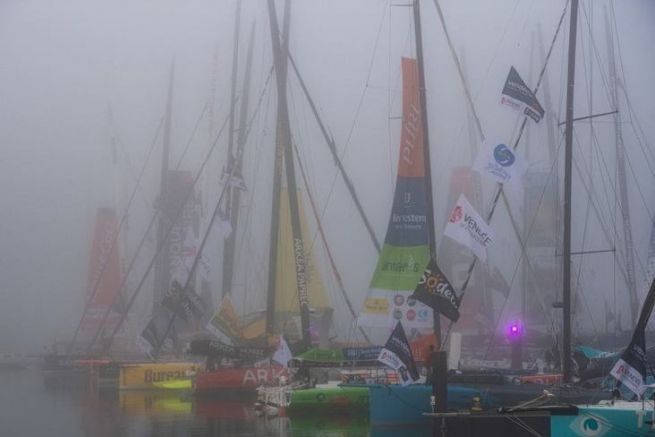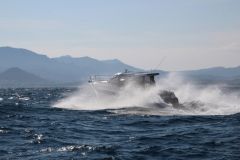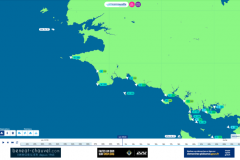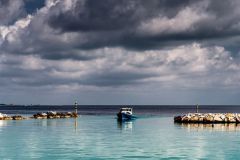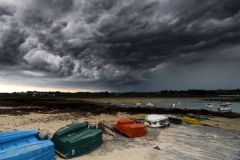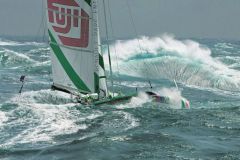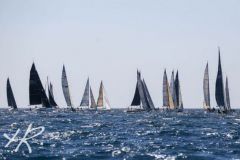At sea, on a beautiful winter or summer morning. The temperature is a little low. At the Zenith, the sun brings pleasant comfort to body and mind.
Rapid formation of the phenomenon
No wind, a high-pressure situation. Suddenly, the temperature drops sharply and with it, visibility will decrease. The fog falls and you immediately find yourself in a thick cocoon with no visibility at all.
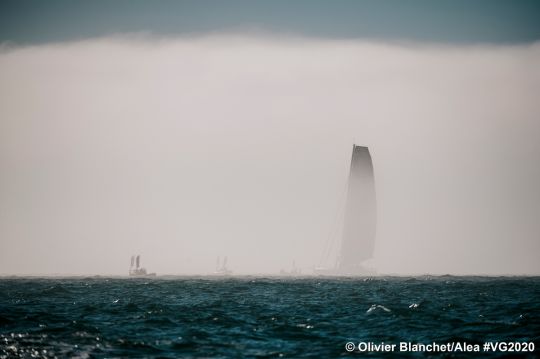
No reproach can be made for unforeseen circumstances or lack of preparation. If conditions are conducive to the formation of fog, forecasting slicks is virtually impossible. It is the meeting of a cold air mass and water heated, even if only on the surface, by the sun's rays. Hence the sudden drop in temperature that accompanies this surprising phenomenon.
Although it is common in the Channel/North Sea, this phenomenon is all the more likely to occur when the water is warm. In other words, the arrival of cold Alpine air over the warmer Mediterranean Sea is likely to cause these fog banks. It is standard practice to name fog in marine weather reports for visibilities of less than 0.5 miles.
Further offshore, it is the opposite phenomenon that will produce this so-called advection fog. This fog will often be less dense, but higher.
Staying at anchor

The first reflex, if you are not sailing, is to stay wet where you are. By doing so, you will not feel the need to signal yourself, or to watch or be attentive to reports from other boats in the area. If you are fortunate enough to be in an anchorage area identified on the charts, in principle, you have nothing to fear. Stay on board your boat, keep yourself warm and let the phenomenon pass.
Light the fire
If you are at anchor outside the charted area, the signage already in place (the anchor ball) is invisible to other boats. To signal yourself, act as if you were sailing at night with the aim of making yourself as visible as possible. Switch on all the standard navigation lights (port and starboard), the mooring light and the masthead light. If other lights are available (hull lights, deck lights, etc.) switch them on. Radio visibility is also important, so it is time to switch on AIS and VHF.
Make some noise

Fog has the particularity of filtering light, but not only. The density of the ambient air saturated with humidity makes the transport of sound change for the better. For comparison, in dry air at 20°, sound travels at 344 metres per second, whereas in water it travels at 1482 metres per second. If we consider that fog appears from 60% humidity, we empirically obtain a speed of sound movement close to 800 metres per second.
You might as well take advantage of this opportunity to signal yourself. This is what the RIPAM recommends in terms of audible signals in fog. Rule 35 on audible signals in reduced visibility provides for certain principles:
- A wandering boat will have to emit a prolonged sound at least every 2 minutes.
- A boat without wandering will make two prolonged sounds at least every 2 minutes.
- A sailboat will manifest itself by a prolonged sound followed by two short sounds at least every 2 minutes.
- A boat at anchor may emit a short sound followed by a prolonged sound and a short signaling sound.
- A pilot boat, on the other hand, will make four short sounds to get noticed.
Listen to the noise
All of these signals, if they are intended to make you noticed by others, only become interesting if others are actually listening. This means that the usually permanent and constant visual watch is de facto replaced by an attentive auditory watch during a foggy episode. It is therefore important that both the crew and the vessel itself make as little noise as possible during this period. Secondly, the skipper must be aware of the rules of these noise emissions in order to be able to identify a vessel that is signalling itself.
Ideally, one person at the bow and one person at the stern of the boat should listen to the noise. This crew member will be able to differentiate between directions - forward, aft, to his or her left or right - and types of sound signals - bell, foghorn, gong. Of course, you will have to explain to this "listening crew member" that the number of occurrences and the length of the sounds must be taken into account in order to clearly understand them.
In case of emergency
In an emergency case (a boat has not seen you or you have not seen a boat and there is a risk of collision), you have the formal possibility of manifesting your presence by any means not provided for in the RIPAM. In other words, you can trigger any useful sound means as long as it does not carry out one of the standardised messages (tacking to one side or the other, going backwards...), supplemented by an attempt to establish contact by VHF.
And you, have you ever experienced surprising, worrying or worse, accidental fog strokes? Come and share with us your adventures in the fog on the Yacht Club !

 /
/ 